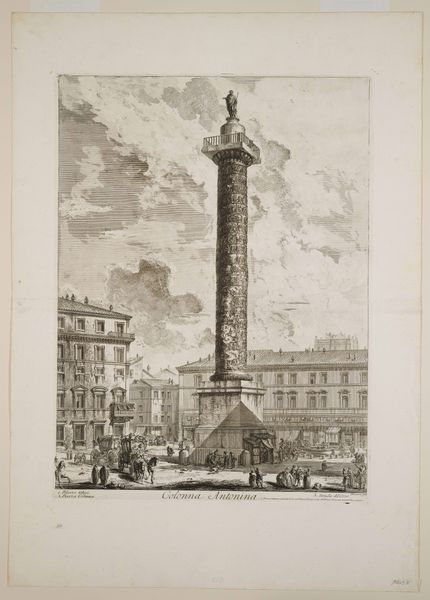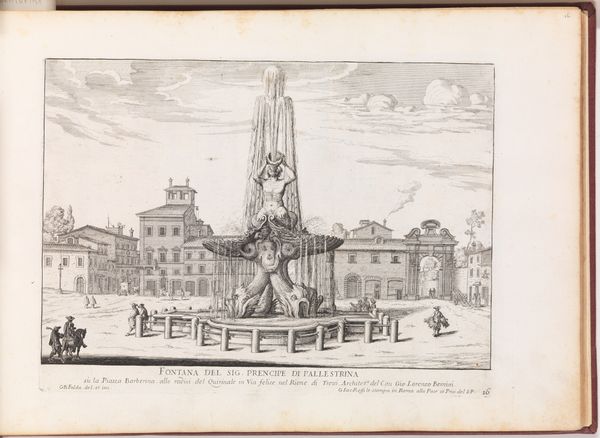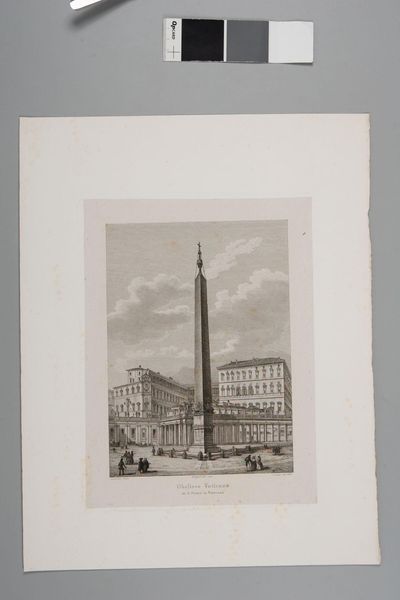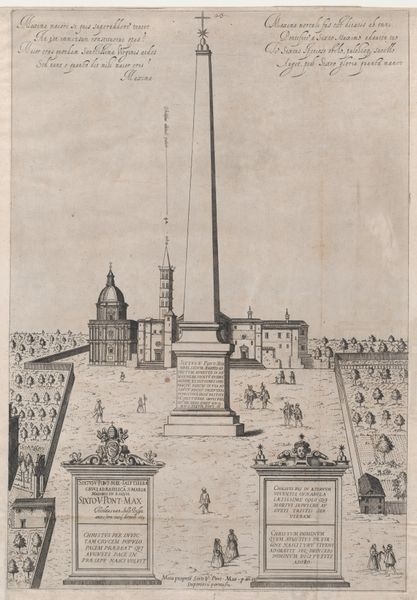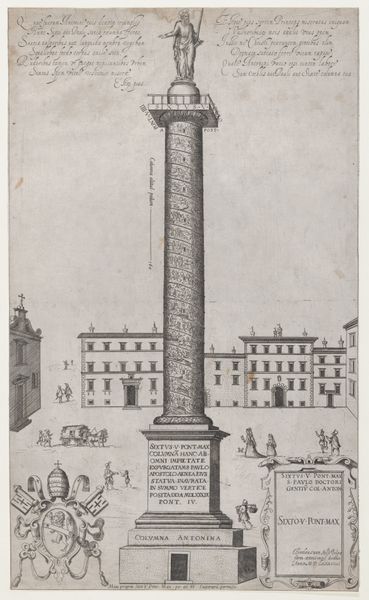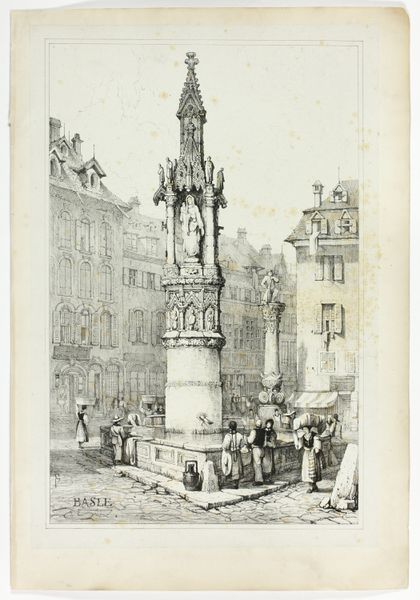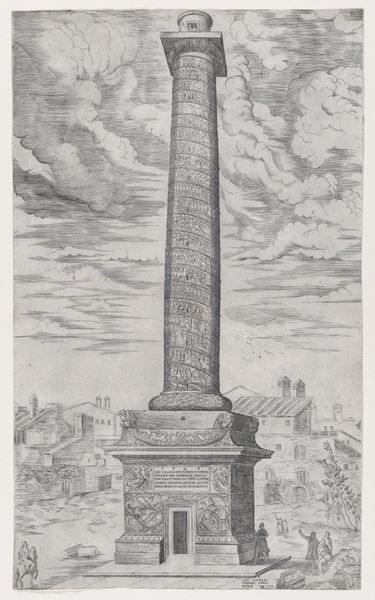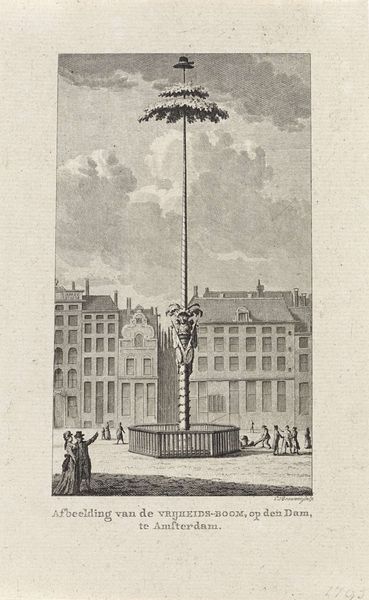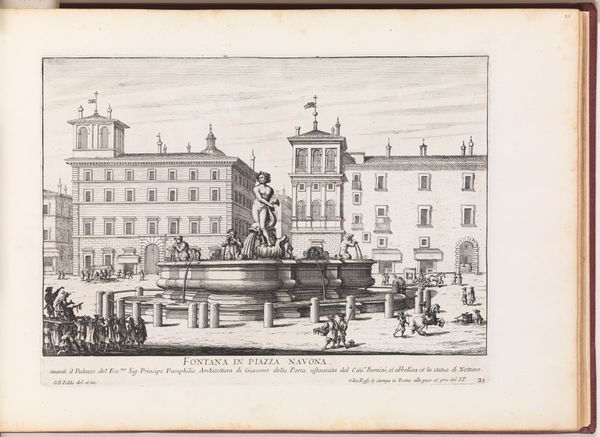![Altra Veduta della Fontana in Piazza Navona [Fontana dei Quattro Fiumi], from "La Fontane di Roma nelle Piazze e Luoghi Publici (...)" by Giovanni Battista Falda](/_next/image?url=https%3A%2F%2Fd2w8kbdekdi1gv.cloudfront.net%2FeyJidWNrZXQiOiAiYXJ0ZXJhLWltYWdlcy1idWNrZXQiLCAia2V5IjogImFydHdvcmtzLzVmMGNiOWY3LWRjZTEtNGFjZi05NjYzLTIwNWJkMWEyMDBkMC81ZjBjYjlmNy1kY2UxLTRhY2YtOTY2My0yMDViZDFhMjAwZDBfZnVsbC5qcGciLCAiZWRpdHMiOiB7InJlc2l6ZSI6IHsid2lkdGgiOiAxOTIwLCAiaGVpZ2h0IjogMTkyMCwgImZpdCI6ICJpbnNpZGUifX19&w=3840&q=75)
Altra Veduta della Fontana in Piazza Navona [Fontana dei Quattro Fiumi], from "La Fontane di Roma nelle Piazze e Luoghi Publici (...)" 1691
0:00
0:00
drawing, print, engraving
#
drawing
#
baroque
# print
#
form
#
cityscape
#
history-painting
#
engraving
Dimensions: Plate: 11 5/16 x 8 3/8 in. (28.7 x 21.2 cm)
Copyright: Public Domain
Editor: This is Giovanni Battista Falda's 1691 engraving, "Altra Veduta della Fontana in Piazza Navona," depicting the Fontana dei Quattro Fiumi. It feels like a very controlled and deliberate snapshot of Baroque Rome, and it kind of makes me feel a little removed from the bustling city, despite all the detail. What do you see in this piece? Curator: What I see is a carefully constructed image that attempts to naturalize power and privilege. This print, like many others from the period, operates as a form of propaganda, subtly reinforcing the social hierarchy. Consider how the fountain, a symbol of papal authority and wealth, dominates the composition, literally towering over the figures in the square. Editor: So you're saying it's not just a nice picture of a fountain? Curator: Exactly. It's a carefully crafted representation designed to communicate very specific ideas about Rome and its ruling class. The figures populating the square appear almost as set dressing, reinforcing the idea of a divinely ordained social order. How does this visual strategy contribute to legitimizing existing power structures, in your opinion? Editor: Well, if everyone’s in their place and the Church is at the center, it suggests that’s the way things should be. Almost like this is the natural order. Curator: Precisely. And think about the labor and resources required to create such a spectacle. Fountains, architecture – they are never neutral. Who benefits from these grand displays, and whose voices are silenced in their creation and representation? Considering how Piazza Navona was also a marketplace, what is the relationship between commerce, power, and visual representation here? Editor: I guess I never really considered the political undertones of something as seemingly straightforward as a city view. I learned a lot just from unpacking those layers of context. Curator: That's the power of art history when it actively engages with socio-political theory! It allows us to excavate narratives embedded within the image and prompts us to reflect on the world around us today.
Comments
No comments
Be the first to comment and join the conversation on the ultimate creative platform.

